ARCHAEOLOGICAL MATERIAL
In the investigated area only few archaeological materials have been discovered. Most of them belong to room a: a loom installation on the storey and some entire pots on the ground floor. In room D - south : some broken storage pots on the storey and a bowl on the ground floor. Only few tools we have discovered (made by stone and bone) and not of the best quality. The few archaeological material discovered shows that before intensifying the fire people have a short time to save some of their goods. They can not take the big storage pots and installations; only the small pots, with seeds. Comparing with the main area of the settlements, in the “block” of houses P40-P43 to which we refer, big storage pots have been found (P40) and especially in the storey of P43 (12 entire or fragment pots).
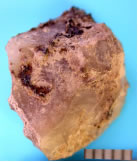
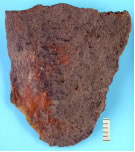
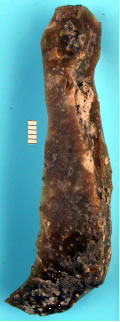
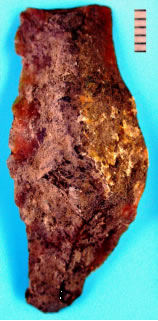
Fig. 58. Chopping tools
The stone tools indicate three different geological sources. Piece from fig. 58/1, after the macroscopic aspect seems to come from S Banat, Gârnic area, or from the E of Lugoj, on Timiş River. For the red pieces (fig. 58/2,4) we have not samples in our lithotheques at Cluj or Sibiu (Romanian-Austrian project). These hypotheses have to be check through microscopic analysis. We mention two scrapers (fig. 58/3-4) and pieces with retouches (fig. 58/1).
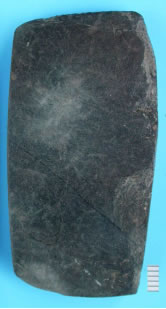
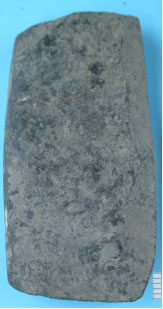
Fig. 59. Polishing stone tools
From polished stone we have discovered two rectangular axes, a typical shape at Parţa and a grinding stone or a polisher (reused to support the post, fig. 54).
Between the few clay objects we mention two fishing balls (one decorated with alveolus) and a small clay sling ball for hunting birds.
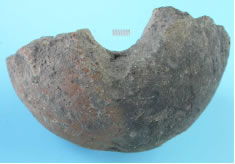
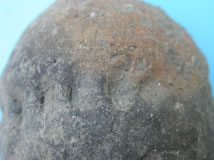
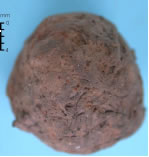
Fig. 60. Clay objects
Two buttons made by shards might be used for thicker clothes (fig. 61); a perforated clay cylinder can be noticed too (fig. 61/1).
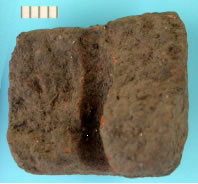
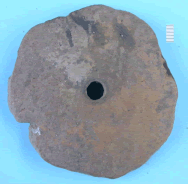
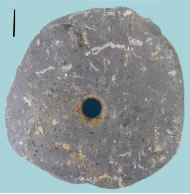
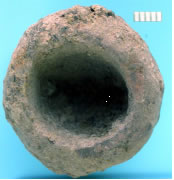
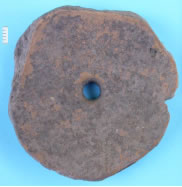
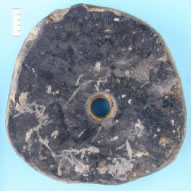
Fig. 61. Ornaments and clothing elements and ornaments; 4, small pot (child toy)
Bone and antler tools: a fragmentary harpoon (fig. 62/3), a bone piercing tool (fig. 62/2), a bone tool for polishing the pottery (fig. 62/1) and an antler fragment have been discovered. There are others piercing tools made by big bones.



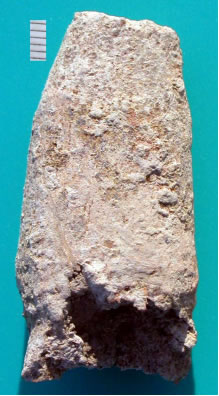
Fig. 62. Bone and antler tools
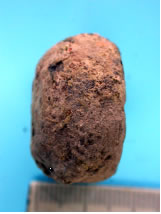
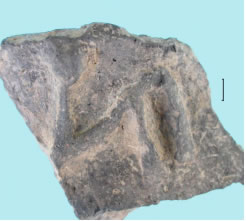
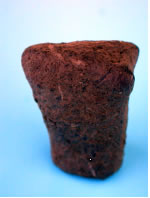
Fig. 63. Plastic
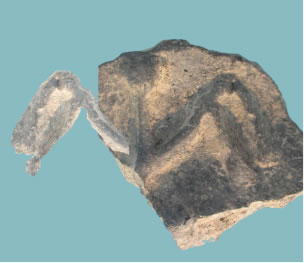
Fig. 63.2. Zoomorphic figurine
We have discovered few plastic representations (fig. 63), mainly because excavation was between ruins and floors. We mention here a cylindrical figurine, maybe a toy (fig. 63/1), a zoomorphic figurine (fig. 63/2) and a very interesting pot fragment. In the interior of the pot a bas-relief dancing woman was rendered. Several times, when a message is transmitted through dancing human symbols there is double representation of the hand (fig. 64). The legs are missing, so we can not say too much regarding the meaning. An analogy for this type of representation it is at Zăuan, house 4 (Băcueţ – Crişan 2006, II, fig. 34/4), in Starčevo – Criş IVA level.

Fig. 64. Different human figures in the symbols of «sacred writing »
LIDS
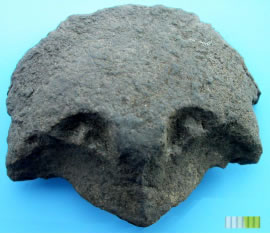
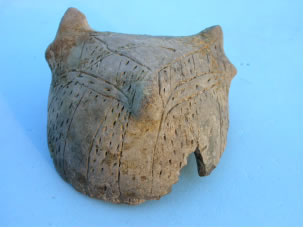
Fig. 65. Lids
Two discovered lids are very interesting. One (fig. 65/1) represents a unique; the face shape it is not very usually in the Middle Neolithic, remembering the stone sculptures. The other is an amphora lid (in the edge of the room C, to M. Moga excavation). Shape and decoration remember the Vinča ones, but motives and their used show that is much more related with the Banat culture. The top has a triangle shape and is decorated with a band filled with points that separate it of the nape. Eyes are very much stylized and elongated. Some bands with points of the face suggest a mask ornaments. In fact the basic idea is of a mask not of a face.
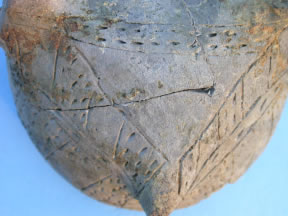
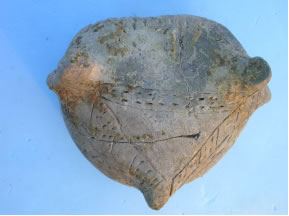
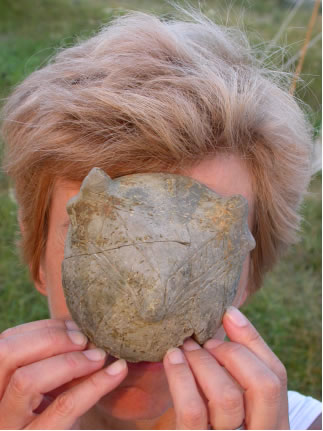
Fig. 66: 1-2, details of the lid, face suggest the mask idea (3)
The mention lied is characteristic for the Banat culture. Fr. Resch mentions seven such lids at (Resch 1991, p. 186/187, top type B5). The ears are very close of those of Fr. Resch type. The eyes have been not codified.
THE POTS
Few entirely or fragmentary pots have been discovered. One is made of a fine paste with sand, half black, half ashes (interior is also of an ash color; this was the firing color).
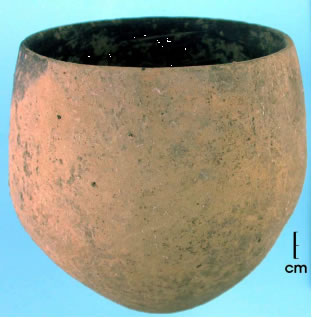
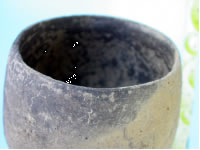
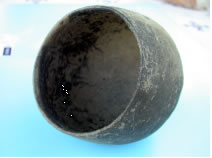
Fig. 67. Bowl
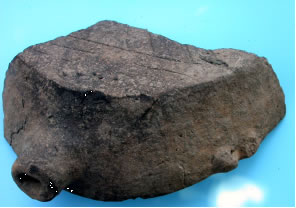
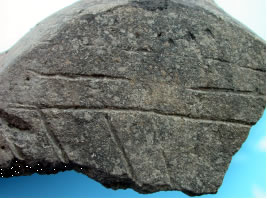
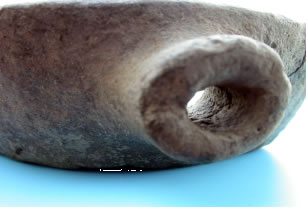
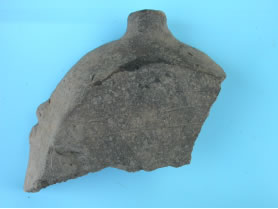
Fig. 67. Pan
Most interesting is a pan with a thicker hole. This hole was used to introduce here a sharpen tail, that permit to take of the pot when was very hut. We believe that through this hole fats can be flow in small altars or other pots.
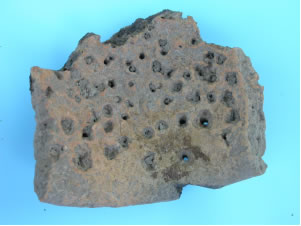
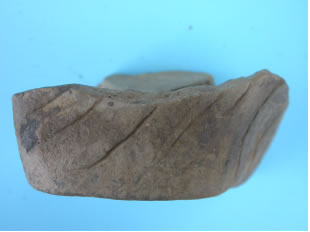
Fig. 68. Lid (fire protector) and a rectangular pot
Such small altars have been used for keeping fire (but also for fats offerings to divinities). During day time they need to be protected by another pot (so call strainer, in fact a lied with small holes and a bigger one on the top). They can offer a very good light during the night.
Other interesting shape is a quadrilateral pot (fig. 68/2), typical for Late Neolithic (IIB-III stages of the Banat culture, Turdaş and Tisa cultures).
MINIATURE POTS
Some miniature pots have been discovered. It is possible that they have been made by children or for children. They have been well fired. Several times these miniature pots have finger prints that must be investigated.
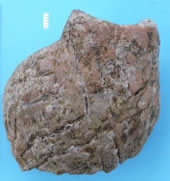
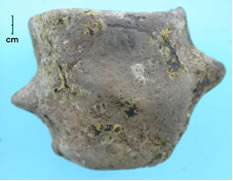
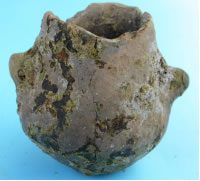
Fig. 69. Miniature pots
Pots fragments have been included in our database, but not yet cumulated with the other materials, while some area still have to been investigate, especially in room A.
Pottery fragments discovered until now do not raise any problems by chronological or cultural point of view. Those typical for the Banat culture (Vinča type), or with Linienbandkeramik traditions (or related with these ones) are dominant. Typical Linienbandkeramik elements or Szakálhát, as well as imports of Bükk type are missing. One tray used for cooking brad has small prominent, similar with „bird beaks”.
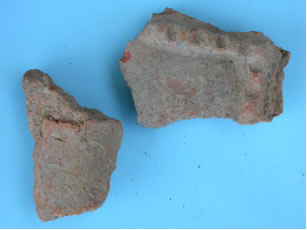
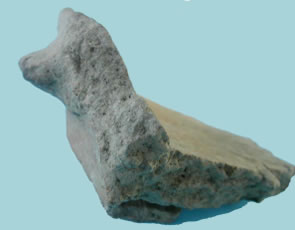
Fig. 70. Pottery fragments
In this moment is difficult to establish exactly the dwelling function. There are several elements related with household activities or social ones (especially on the inferior levels). We are waiting for the zoo archaeological analysis to see if the hypotheses that dwelling belong to a hunter (that can explain the symbol of the house, the deer head) is correct or not. Some tools, such as harpoon, big scrapers (good for cleaning the animal hides), the big storage pots from the storey, the deepened fireplaces, and the lake of tools used for agriculture, the big bed can be arguments for a hunter house. But we believe we need some more arguments.
„Block” of houses « Deer House » belong to level 6, Banat culture, faze IIB, a flourishing period of the settlement and civilization. The settlement was destroying during level 6b. Level 6 consist of several building and repairing phases: 6a, the early period (the first dwelling with storey; now still are in function dwellings from level 7c); 6b, the last two-three stages (when settlement was destroy). By chronological and cultural point of view this correspond to Vinča B1/B2 stages, 5b phases (W. Schier) at Vinča - Bjelo Brdo; even at Zorlenţu Mare there are during this period dwellings with suspended floor and storey (for a larger discussion see Lazarovici C.-M.& Gh. 2006, chapter III.2, Fig. IIIb.4b), or at Balta Sărată II level etc.
By absolute chronological point of view correspond with interval 5.100 – 5.000 CAL BC. We believe that mentioned destructions might be related with Vinča C „shock” (Lazarovici Gh. 1987; 1994), prior Foeni migration that seems to be the second big shock (Draşovean 1996; 1997; Schier, Draşovean et alii 2004 etc.). In the same time or later is Vinča - Pločnik I, horizon with thicker lids (C1 at Vl. Milojčić), but this is not a criterion. Such pots have been noticed even earlier (at Supska Stublina, in Karanovo III etc.), we believe that this problem need a new analyze, or we just wait for final opinions of W. Schier.











































